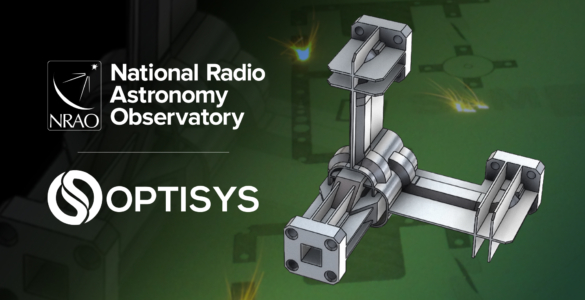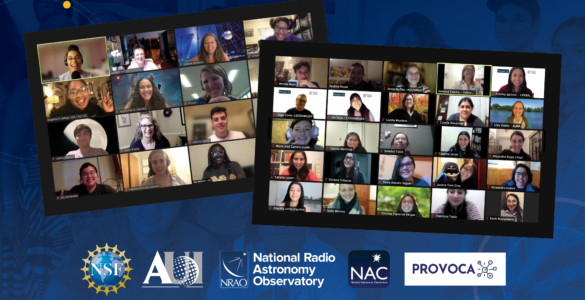Latest NRAO News
News is managed by NRAO News & Public Information. Questions about News? Have a story to share? Want to interview a scientist or create new media about our telescopes?

The Planetary Science Decadal Survey indicated that new ground-based radar systems will be vital research tools for planetary defense and studying planets, moons, asteroids, and other Solar System objects. The National Radio Astronomy Observatory and the Green Bank Observatory are developing new capabilities for the Green Bank Telescope and the Very Long Baseline Array that will meet those needs.

The National Radio Astronomy Observatory has awarded four Jansky Postdoctoral Fellowships for 2022. The recipients will pursue research in a wide range of topics during their time as Jansky Fellows.

Recent advancements in 3D printing (also known as additive manufacturing) for metallic structures make it possible to print all-metal electromagnetic devices—like antennas and waveguides—on demand. A new partnership between the National Radio Astronomy Observatory, headquartered in Charlottesville, Virginia, and Optisys, LLC, headquartered in West Valley City, Utah, will explore the potential for leveraging this technology for radio astronomy applications.

An NRAO researcher is receiving an engineering award for an innovative development that is improving radio telescope performance and also is benefitting numerous other fields.

Dr. Tony Beasley, Director of the National Radio Astronomy Observatory and AUI Vice President for Radio Astronomy Operations, was today elected as a fellow of the American Association for the Advancement of Science (AAAS).

As the end of 2021 approaches, we celebrate the certification of 28 women in STEM who became the first generation of PROVOCA mentors, a trained group of professionals and students in science, technology, engineering and mathematics that will provide mentoring to girls and young college students who decide to pursue a career in these disciplines.

Released in November 2021, the Astronomy and Astrophysics Decadal Survey—Astro2020—not only set scientific priorities for the discovery and study of potentially habitable worlds and finding answers to big questions about the nature of the Universe, but also emphasized the importance of diversity, equity, and inclusion (DEI) in the field of astrophysics. The inclusion of DEI initiatives in the report signals a shift in the industry, one for which the National Radio Astronomy Observatory (NRAO) and its partners have been building a foundation for over a decade.

The National Science Foundation (NSF) has awarded the National Radio Astronomy Observatory’s Central Development Laboratory (CDL) $250,000 in Partnerships for Innovation (PFI) funding to support the proof-of-concept development of high-performance reflectionless radio frequency filters at 40 GHz and above for high-frequency applications, including wireless and defense.

A system designed to provide streaming data from the VLA to SETI Institute equipment to search for radio transmissions possibly generated by extraterrestrial civilizations has successfully completed its first test.

Kicking off this week, and running throughout the month of October, the annual conference of the National Astronomy Consortium (NAC)—NACtober—will highlight the hard work, research, and accomplishments of the 2021 NAC cohort.





